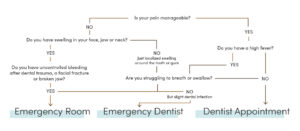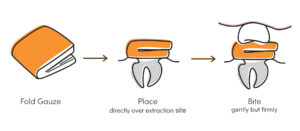How Much Is a Dentist Visit Without Insurance? Exact Costs Explained

Reviewed By Dr. Dennis Rollins, DDO |
July 2025 • 6 min Read
Reviewed By Dr. Dennis Rollins, DDO | July 2025 • 6 min Read
Below, you’ll find a breakdown of typical out-of-pocket costs for common dental procedures, along with the reasons behind these costs.
Keep in mind that these costs can vary significantly based on your location, the dentist’s experience, the materials used, and the complexity of the procedure.
The Added Costs of Avoiding the Dentist
Putting off dental care might seem like a good way to save money, but it often means paying more later. A minor cavity can develop into a more serious issue that requires a much more costly root canal. An ignored toothache might lead to an infection that spreads, requiring emergency treatment.
What’s more, neglecting the dentist often means daily discomfort, difficulty eating, and the stress of knowing something isn’t right.
With all this in mind, let’s go over ways you can maintain your dental health without breaking your budget.
Tips for Preventing Costly Dental Procedures
Consistent Hygiene
Brushing twice a day with fluoride toothpaste, flossing every day, and limiting sugary snacks and drinks are tremendously helpful in preventing the kind of issues that lead to costly dental visits.
Regular Dental Visits
When it comes to the dentist, spending a little can save you from spending a lot. Maintaining a rhythm of two cleanings a year helps keep your teeth healthy, significantly reducing the likelihood of problems requiring costly procedures.
Addressing Issues Quickly
Dental problems very seldom go away on their own. In fact, they usually get worse if they’re not dealt with promptly. Going to a dentist as soon as an issue presents itself can help problems from becoming worse, saving you money in the long run.
For help finding a dentist in your area, click here or call us at (888) 597-3896.

Tips for Reducing the Cost of Procedures
- Compare Quotes – Ask for a treatment plan from your dentist, including pricing, and then ask a second dentist for a quote for the same work. This can help ensure you pay a fair price for the treatment you need.
- Check Dental Schools – Universities with dental programs often provide low-cost care. Treatment is done by students and is supervised by licensed dentists. This option can be less convenient than a normal dentist appointment, but you can often save 50% or even 75% on the procedure.
“I found a dental school clinic nearby that charged half the price for my crown,” one patient told reddit.com. “It took longer to schedule but saved me almost $800.”
- Look for Community Clinics and Sliding Scale Centers – Federally qualified health centers and nonprofit dental clinics charge based on income and won’t turn anyone away for inability to pay.
- Ask About New Patient Specials and Cash Discounts – Many dental offices offer discounts for new patients. Others will offer a discount if you pay cash up front.
- Take Advantage of Dental Discount Plans – Joining one of these plans (often at $100–200 per year) gives you access to reduced rates at participating dentists. Think of it as a Costco membership for dental work.
- Seek Out Hospital Programs and Residency Clinics – Teaching hospitals with dental or oral surgery residency programs often provide specialized procedures (like root canals or surgical extractions) at reduced prices.
- Search for Charity and Nonprofit Events – Organizations like Mission of Mercy, Remote Area Medical, and Dentistry From the Heart often set up free dental clinics. The lines can be long, but you can often receive hundreds of dollars’ worth of care for free.
- Explore Payment Plans – Many dentists work with financing companies or offer in-house installment plans, which can allow you to spread dental expenses over months instead of paying all at once.
Dealing With Anxiety Around Dental Costs
Stress about the cost of dental care is very common. When you’re getting your mind around paying for a procedure, here are a few steps to take.
Get Clarity Upfront
Call your dentist’s office and ask for a written estimate before treatment. This will help you and plan and will prevent expenses from surprising you later.
Prioritize When Possible
Ask your dentist’s office to explain which procedures are urgent and which can wait. This can help you spread out costs over time.
Give Your Dentist a Chance to Help
Dentists and their staff are used to advising patients on costs. Letting them know about your concerns will prompt them to tell you about the solutions they offer to make treatment feasible for you.
As Dr. Bettye A. Apenteng said to ada.org: “Candid dialogue between patients and their oral health providers about the cost of care can inform a shared decision-making process for developing tailored, clinically sound care plans that are also responsive to patients’ needs.”

Need Help Finding a Dentist?
Related Information

Should You Go to the ER for Tooth Pain? A Quick Guide
Whether you should go to the ER for tooth pain depends on the severity of your pain and what other symptoms you’re experiencing. Read on for help deciding how to find relief.

How to Stop Bleeding After Tooth Extraction: Easy Tips for Immediate Relief
After a tooth extraction, some bleeding at the site is normal and will usually slow down within 2-3 hours. Gentle oozing (think pink saliva) will often continue for the first 24 hours. Below you’ll find tips for helping to stop the bleeding, and how to tell the difference between normal recovery and signs that you should call your dentist.

Dental Anxiety: Proven Strategies to Stay Calm During Your Appointment
If you’re feeling anxious about an upcoming dental visit, we can tell you this is completely normal. In fact, dental anxiety is something our dentists help people navigate all the time. Read on for practical tips, and to hear from other patients who experience dental anxiety.
